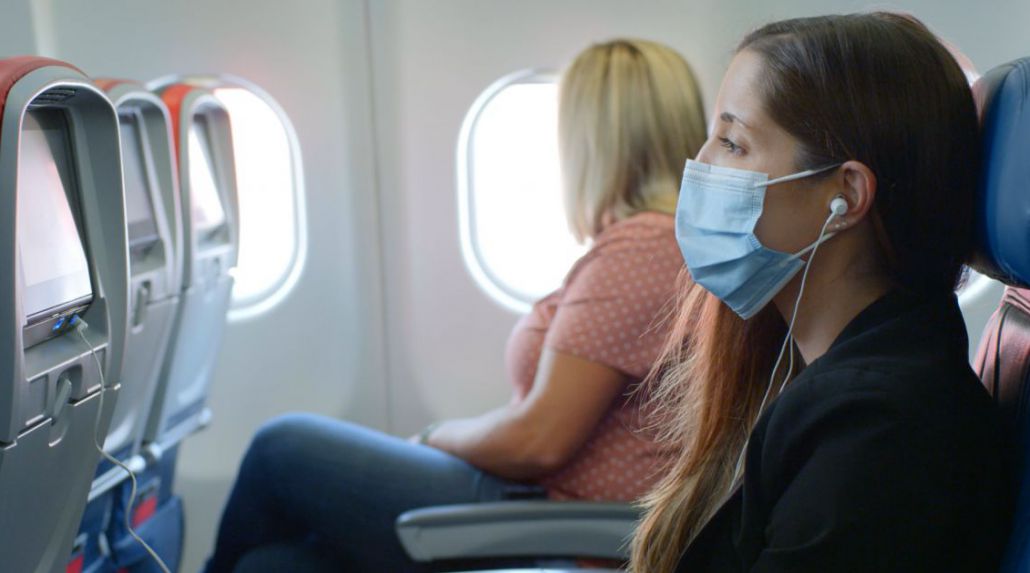

How Safe Is Flying Today?
Aviation has understandably been a focal point of the pandemic - its global spread was made possible by infected people traveling the world. But to what extent does the flight itself represent a risk? We review the science and dispel some myths regarding the risk of spread on today's modern aircraft.
Understanding Cabin Airflow
A common myth is that airplanes have stale or stagnant air, allowing infections to easily spread amongst the 100+ on the flight with you. In fact, most aircraft in use today have better air quality than you'll find in a typical office building. It starts with understanding that its not actually a fully sealed cabin. New air is constantly introduced from the outside which mixes with the existing cabin air, while half of the air in the cabin is flushed outside. The portion of the air that is recycled is pushed through hospital-grade HEPA filters. These systems effectively bring in new cabin air every 2-3 minutes, whereas most office buildings see the level of exchange about every 15 minutes.
The other factor for airflow is that the new and cleaned air is pushed through the cabin from the top (the vents above your seat) to the floor. This flow limits the risk to those closest to you on the aircraft, since the air is not generally travelling horizontally through the cabin.
Mitigating Factors
Even during pre-Covid travel, the airflow limited the transmission of infections on a plane (flu, cold, etc). Since the early days of the pandemic, a large number of mitigating practices have been introduced that add even more safety. Enhanced cleaning practices are commonplace, although the practices vary widely from airline to airline. Some airlines are performing light cleaning before each flight and only deep cleaning nightly, while others have stepped up to include the electro-static spraying before each flight and continuous cleaning even during the flight. See our blog post listing the cleaning standards of all major travel suppliers.
In addition to the cleaning, the requirement to wear masks onboard substantially limits the potential transmission rates. While the variables involved in studying this have made it complicated, the few noted cases of in-flight transmission have involved passengers not wearing masks. Meanwhile, there have been numerous known cases of masked passengers who were (later) determined to be positive that did not result in transmission to their fellow passengers.
On board procedures have also changed to provide more space between passengers during boarding and deplaning, and to limit contact between flight attendants and passengers.
Capacity Impact
While the airflow reduces the impact of those who are not near you on the aircraft and the masks and cleaning limit the possible transmission, one of the most well known factors in preventing transmission is distancing. On board, this is achieved by limiting the number of seats that the airline will sell, often through the blocking of middle of seats. This is an area where the differences between airlines has become more stark, and easier to determine than their cleaning standards.
While most airlines initially limited capacity, many were fearful of the economic impact and reverted to selling as many seats as they could. Some airline executives claimed that as you could not maintain 6-foot distances on board, there was no need to block the middle seat. Obviously, the effectiveness of distancing does not go from 100% to 0% as you move from 6 foot to 5 foot gaps between people. Any distance helps, and the more space the better.
Which Airline Stands Out?
Throughout this era, the cleaning standards, procedures and the commitment to limiting capacity on board have set Delta Air Lines apart as the clear leader amongst the US airlines. We are proud to consider them as one of our key supplier partners.
Having said all this, we want to ensure that you Travel Well, and travel safely. We present this information to provide you an understanding of the risks and impact of flying - not to encourage those who are not yet ready to return to the skies. For those that are ready to travel again, its important to remember that there are risks throughout the travel journey - in airport, ground transport and accommodations. Our well known practices of cleaning, masks and distancing can provide comfort and safety to allow you to travel again.
Photo Credit: Delta Air Lines
